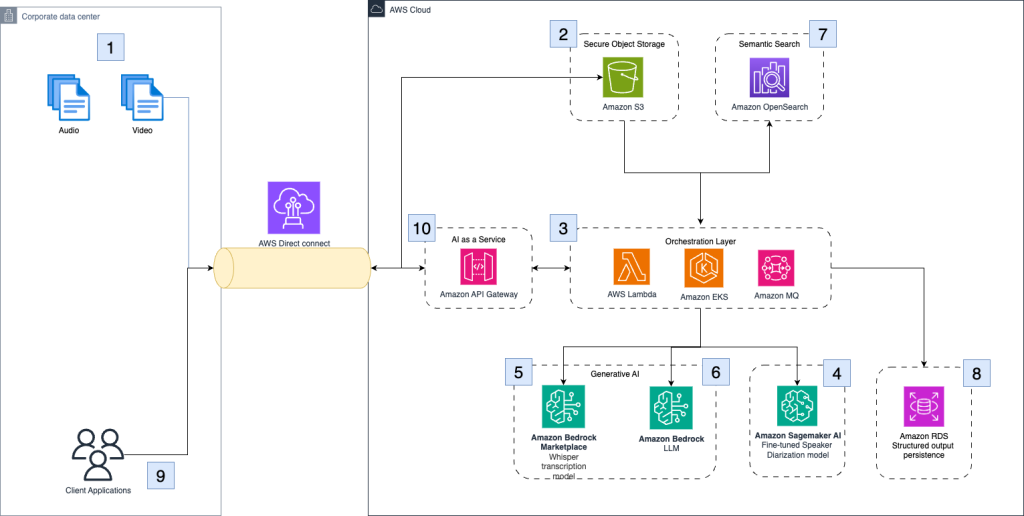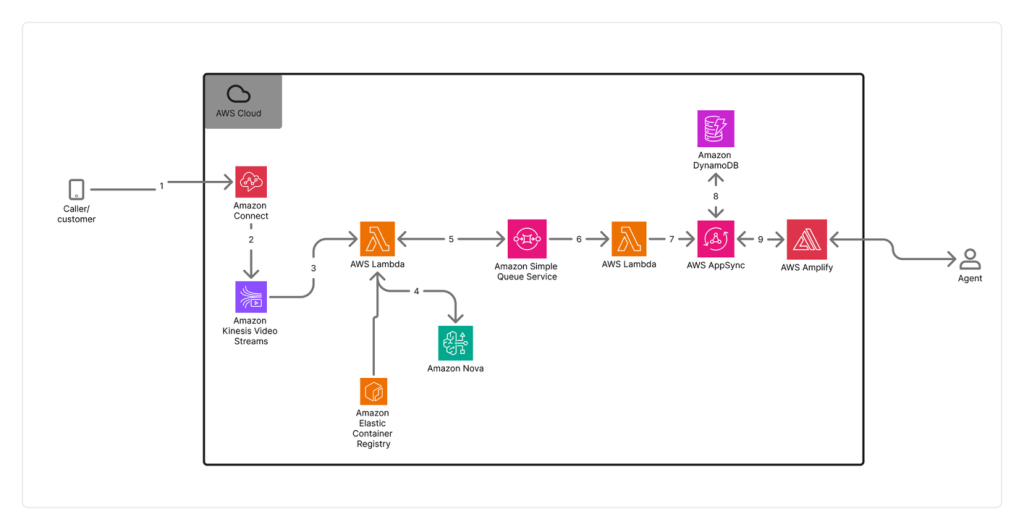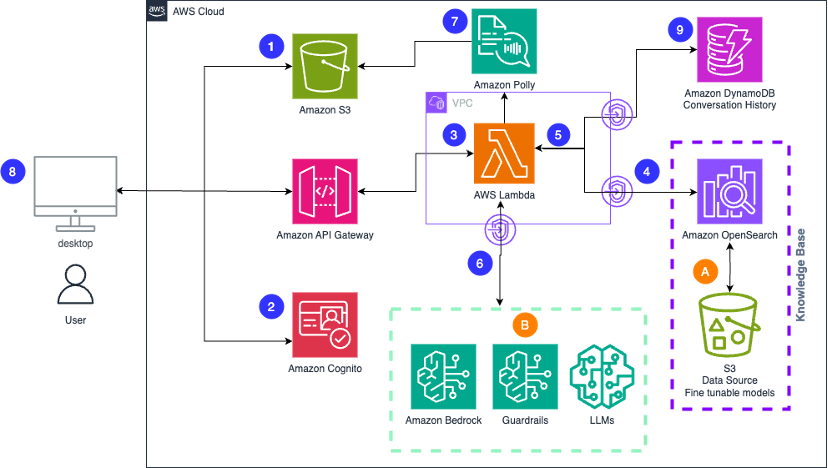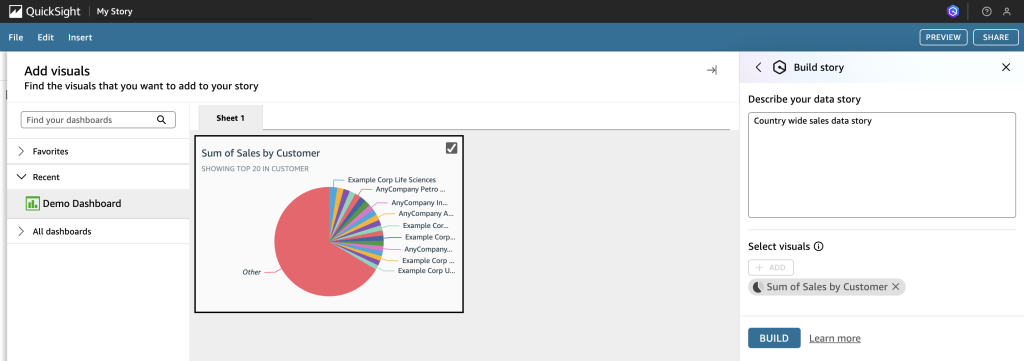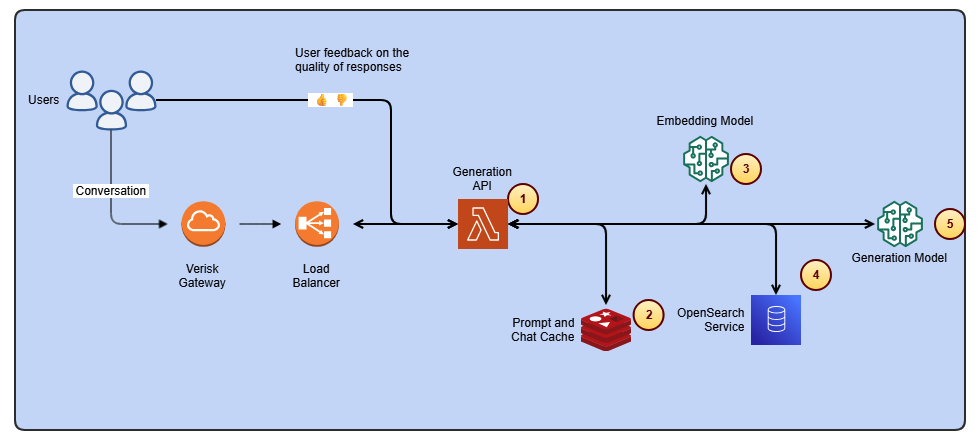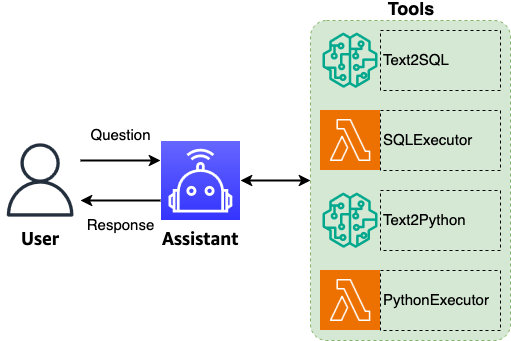Artificial Intelligence
Category: Analytics
How Clario automates clinical research analysis using generative AI on AWS
In this post, we demonstrate how Clario has used Amazon Bedrock and other AWS services to build an AI-powered solution that automates and improves the analysis of COA interviews.
How Switchboard, MD automates real-time call transcription in clinical contact centers with Amazon Nova Sonic
In this post, we examine the specific challenges Switchboard, MD faced with scaling transcription accuracy and cost-effectiveness in clinical environments, their evaluation process for selecting the right transcription solution, and the technical architecture they implemented using Amazon Connect and Amazon Kinesis Video Streams. This post details the impressive results achieved and demonstrates how they were able to use this foundation to automate EMR matching and give healthcare staff more time to focus on patient care.
Build scalable creative solutions for product teams with Amazon Bedrock
In this post, we explore how product teams can leverage Amazon Bedrock and AWS services to transform their creative workflows through generative AI, enabling rapid content iteration across multiple formats while maintaining brand consistency and compliance. The solution demonstrates how teams can deploy a scalable generative AI application that accelerates everything from product descriptions and marketing copy to visual concepts and video content, significantly reducing time to market while enhancing creative quality.
Automate Amazon QuickSight data stories creation with agentic AI using Amazon Nova Act
In this post, we demonstrate how Amazon Nova Act automates QuickSight data story creation, saving time so you can focus on making critical, data-driven business decisions.
Rapid ML experimentation for enterprises with Amazon SageMaker AI and Comet
In this post, we showed how to use SageMaker and Comet together to spin up fully managed ML environments with reproducibility and experiment tracking capabilities.
Build Agentic Workflows with OpenAI GPT OSS on Amazon SageMaker AI and Amazon Bedrock AgentCore
In this post, we show how to deploy gpt-oss-20b model to SageMaker managed endpoints and demonstrate a practical stock analyzer agent assistant example with LangGraph, a powerful graph-based framework that handles state management, coordinated workflows, and persistent memory systems.
Streamline access to ISO-rating content changes with Verisk rating insights and Amazon Bedrock
In this post, we dive into how Verisk Rating Insights, powered by Amazon Bedrock, large language models (LLM), and Retrieval Augmented Generation (RAG), is transforming the way customers interact with and access ISO ERC changes.
The power of AI in driving personalized product discovery at Snoonu
In this post, we share how Snoonu, a leading ecommerce platform in the Middle East, transformed their product discovery experience using AI-powered personalization. In this post, we share how Snoonu, a leading ecommerce platform in the Middle East, transformed their product discovery experience using AI-powered personalization.
Natural language-based database analytics with Amazon Nova
In this post, we explore how natural language database analytics can revolutionize the way organizations interact with their structured data through the power of large language model (LLM) agents. Natural language interfaces to databases have long been a goal in data management. Agents enhance database analytics by breaking down complex queries into explicit, verifiable reasoning steps and enabling self-correction through validation loops that can catch errors, analyze failures, and refine queries until they accurately match user intent and schema requirements.
Deploy Amazon Bedrock Knowledge Bases using Terraform for RAG-based generative AI applications
In this post, we demonstrated how to automate the deployment of Amazon Knowledge Bases for RAG applications using Terraform.
